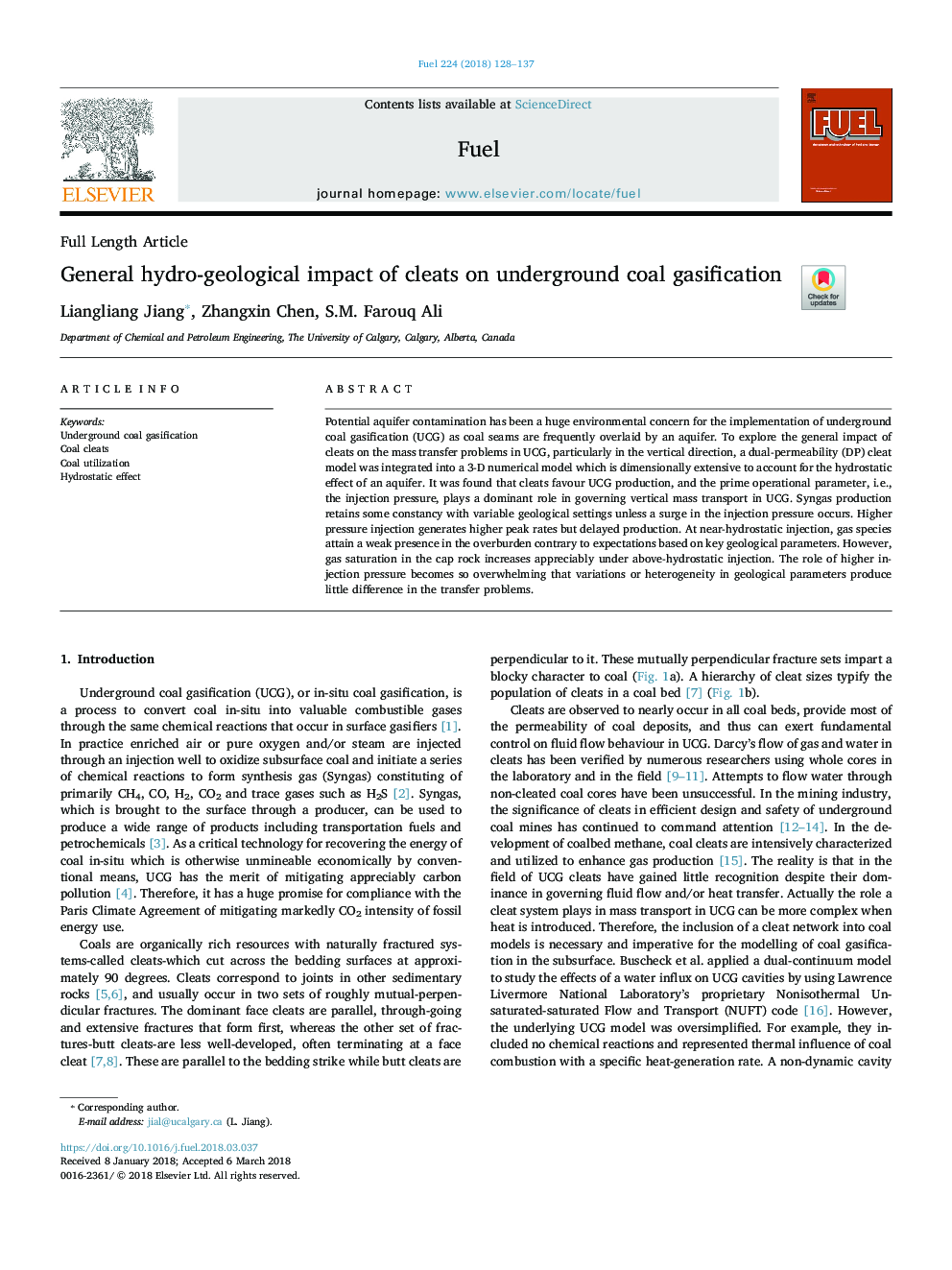| Article ID | Journal | Published Year | Pages | File Type |
|---|---|---|---|---|
| 6631114 | Fuel | 2018 | 10 Pages |
Abstract
Potential aquifer contamination has been a huge environmental concern for the implementation of underground coal gasification (UCG) as coal seams are frequently overlaid by an aquifer. To explore the general impact of cleats on the mass transfer problems in UCG, particularly in the vertical direction, a dual-permeability (DP) cleat model was integrated into a 3-D numerical model which is dimensionally extensive to account for the hydrostatic effect of an aquifer. It was found that cleats favour UCG production, and the prime operational parameter, i.e., the injection pressure, plays a dominant role in governing vertical mass transport in UCG. Syngas production retains some constancy with variable geological settings unless a surge in the injection pressure occurs. Higher pressure injection generates higher peak rates but delayed production. At near-hydrostatic injection, gas species attain a weak presence in the overburden contrary to expectations based on key geological parameters. However, gas saturation in the cap rock increases appreciably under above-hydrostatic injection. The role of higher injection pressure becomes so overwhelming that variations or heterogeneity in geological parameters produce little difference in the transfer problems.
Related Topics
Physical Sciences and Engineering
Chemical Engineering
Chemical Engineering (General)
Authors
Liangliang Jiang, Zhangxin Chen, S.M. Farouq Ali,
